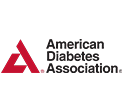Personalized Medicine & Companion Diagnostics: Speaking with Dr. Joshua Cohen, Tufts Center for the Study of Drug Development
Editor’s Note: In August, the Tufts Center for the Study of Drug Development (CSDD) hosted a roundtable of R&D leaders focused on development of companion diagnostics that can show their use in conjunction with personalized therapeutics that will lead to positive health outcomes. We spoke with Joshua P. Cohen, Ph.D., Research Associate Professor, Tufts CSDD about the promises and challenges in the field of personalized medicine.
Real World Healthcare: According to Tufts CSDD, 20 percent of new drugs winning approval in the U.S. last year were considered personalized medicines. What do you think is driving the growth you expect to see?
Joshua Cohen: More investment in the science of biomarker identification and validation, and more investment in the commercialization of personalized medicines and diagnostics.
RWHC: What reimbursement problems, if any, do you see for companion diagnostics?
JC: There are two challenges concerning companion diagnostic pricing and reimbursement. The first is coding. Traditionally, diagnostics have been code-stacked — coded for each individual activity involved in the preparation and use of a diagnostic. Each code is then assigned a price and, when taken together, the prices of individual codes make up the price that diagnostic manufacturers get reimbursed. Code-stacking does not, however, reflect the value of a diagnostic. It only reflects the price of individual components.
The value of a diagnostic is reflected by the second pricing and reimbursement challenge: clinical utility — the linkage between a companion diagnostic and positive health outcomes. The more clinical utility a diagnostic has the greater the chance it will be reimbursed and the higher price it can command. If a diagnostic differentiates between likely responders and non-responders, the value of that differentiation should be reflected in the diagnostic’s price.
RWHC: What can drug and diagnostic companies do to accelerate the development of biomarker efficacy and remove this key hurdle to the development of personalized medicine?
JC: Identification of biomarkers early in development. Coordination and communication with regulators early in development, as the regulatory processes for diagnostics and therapeutics are different. Also, use of next-generation sequencing to develop diagnostics, in which biomarkers with predictive claims undergo rigorous clinical (cross) validation.
RWHC: When it comes to personalized medicine, even high R&D success rates may not mean much if physicians won’t prescribe it and payers won’t reimburse it. Are you aware of any hesitancy to entering the space by the industry?
JC: There may be some hesitancy on the part of the biopharmaceutical industry because personalized medicine alters the blockbuster model. This said, many newly approved personalized medicines have high price tags. In some cases, these high price tags have made them blockbuster drugs (e.g., Herceptin, Gleevec). Physicians will prescribe personalized therapeutics as long as evidence suggests it does a good job at differentiating between likely responders and non-responders to a particular therapeutic, or indicates which sub-group is at risk for certain adverse effects. Similarly, payers will reimburse personalized therapeutics and companion diagnostics if evidence supports their effectiveness and safety. An issue has come up with respect to awareness on the part of the physicians about personalized medicine, and specifically the role that diagnostics play. In cases in which there is less awareness of the need to employ a certain diagnostic, less clinical adoption will occur.
RWHC: What fields of medicine are furthest along in development of personalized medicines?
JC: Oncology dominates. There is a better understanding of the science behind targeted therapies and the role that biomarkers play.
RWHC: Why do you like this field?
JC: It represents the promise of individualizing treatments, rather than relying on an iterative, trial-and-error method.



















